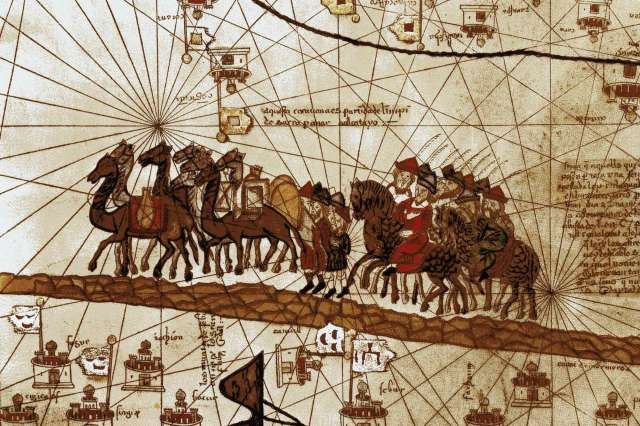Caravane Marco Polo

The Belt and Road initiative (a.k.a. One Belt One Road) – the Chinese project to build the biggest international infrastructure network in human history – is one of the great under-reported stories of our time.
Not on UnHerd, though. From an introduction to the project itself, to the international challenge of raising the trillions of dollars required to finance it, to the significance of the Eurasian landmass, we’ve tried to explore the issue from every angle.
One question we haven’t yet asked, however, is: why bother?
Yes, the world’s biggest infrastructure network is primarily intended to transport the output of the world’s biggest exporter – but don’t we have ships and planes for that? Increasing exports may require more ports and airports, but why build land links across 10,000 kilometers of Eurasia? It’s all a bit Genghis Khan, isn’t it?
An excellent article by Richard Pomfret for Vox EU provides a lot of the answers. It explains the value of the ‘Eurasian landbridge’ i.e. the direct rail freight services that have been established in this decade between China and Europe:
“At current transport costs, auto components and laptops/printers fit into an intermediate category of goods for which a rail link between China and Europe offers a useful niche; the goods are too bulky for air transport, but the firms want faster and more reliable delivery than intercontinental maritime transport can provide and are prepared to pay for the time-saving that rail transport offers over maritime transport.”
It’s worth adding that sea routes from China to Europe and the Middle East run through some highly sensitive pinch points. For instance, there’s the Straits of Hormuz (between Iran and the Arabian Peninsula), the Suez Canal, of course, and the Bab el-Mandeb. That last one is the entrance to the Red Sea between Yemen and the Horn of Africa – and translates as the ‘Gate of Grief’. Reassuring!
Unsurprisingly, the Chinese would like some alternatives to those dire straits – hence the new focus on the overland routes.
The new era of regular rail-freight services from China to Europe began in 2011, with the inauguration of the Chongqing to Duisburg route:
“Since 2011 the number of trips along the Landbridge has mushroomed to 6,235 by December 2017, and over half of those were in 2017.”
That said, we’re only at the beginning of things :
“In 2016, 42,000 containers passed through Kazakhstan, a big increase over the 2,000 in 2011, but they would fit on four container freighters that can pass through the Suez Canal. “
Pomfret notes that there’s been relatively little investment in the landbridge. Establishing the China-Europe routes has so far been a matter of negotiating transit agreements between the relevant governments so that services can run on existing track. Then there’s a few technical matters to sort out:
“At Khorgos, on the Kazakhstan-China border, the transfer for a 40+ container train can be done in 47 minutes. This investment has contributed to shaving the time (e.g. Chongqing-Duisburg took 16 days in 2011 and 12 days in 2017), but most of the time-saving is associated with better logistics and prioritising the profitable service.”
Twelve days, by the way, is three times faster than the equivalent maritime route.
Now imagine what billions of dollars of investment could achieve. New tracks, proliferating routes, more services, longer trains, faster journey times and the inevitable automation of just about everything currently done by hand.
The full exporting power of the Chinese economy will be soon he arriving at a platform near you. Just don’t expect anyone to apologise for any inconvenience.










Join the discussion
Join like minded readers that support our journalism by becoming a paid subscriber
To join the discussion in the comments, become a paid subscriber.
Join like minded readers that support our journalism, read unlimited articles and enjoy other subscriber-only benefits.
Subscribe